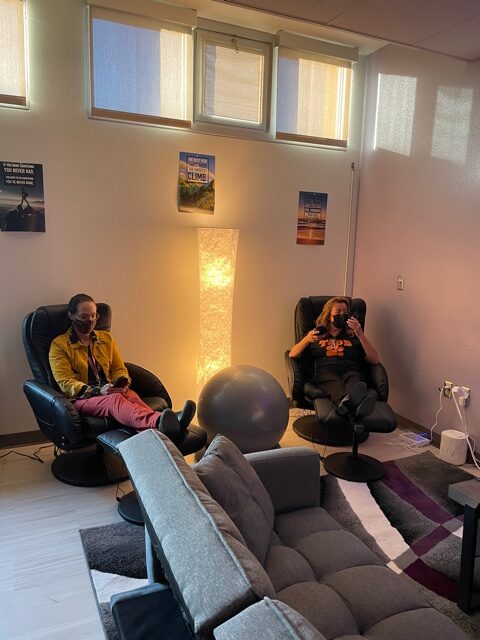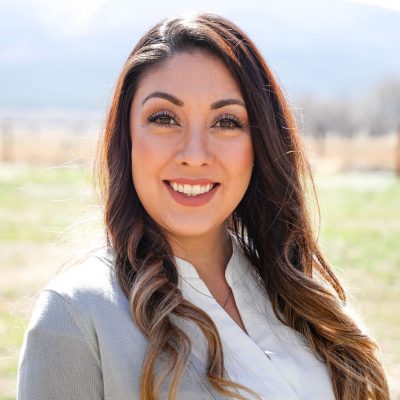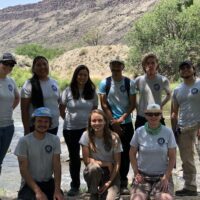She stuck it out to see students return to in-person learning, but the toll the pandemic had wrought on teachers and students was obvious when they returned: More than 10 Taos High teachers chose not to come back for the 2021-’22 school year and statewide there were more than 1,000 open teaching positions at the beginning of the year. Those who did return faced new challenges: smaller staff, fewer substitutes, and the threat of COVID-19 exposure—all of which further disrupted the learning environment.
This strain was obvious to members of Taos High School’s safety committee, which brought forward an idea to the district: What if Taos Municipal Schools created staff “recharge rooms” featuring amenities like massage and lounge chairs, treadmills, hammocks, and yoga equipment? The concept resonated with principal CJ Grace and Taos Municipal Schools superintendent Dr. Lillian Torrez, who contacted the LOR Foundation for help turning the idea into a reality.

Dr. Lillian Torrez, superintendent of Taos Municipal Schools, lounges in a massage chair in the high school recharge room. Photo by Sonya Struck.
LOR’s Taos community officer Sonya Struck recognized these recharge rooms as a compassionate and creative solution to a pervasive issue she’d been hearing a lot about in the community. A 2021 study from the RAND Corporation notes that amidst the pandemic, teachers are significantly more likely than the general population to leave their jobs due to stress and other mental health issues. Even more concerning, teachers over 55 are among the most likely to leave the profession as a result of the pandemic, according to a 2021 Hanover Research study. This trend means there’s less experience in classrooms each year—a problem Taos Municipal Schools has seen firsthand.
The substitute shortage has also grown so dire that the New Mexico National Guard is filling in when full-time teachers miss time—which is mandatory in the instance of COVID-19 exposure.
LOR ultimately made a nearly $9,000 grant to create the first recharge room at Taos High School in November 2021 and is supporting the creation of similar spaces at five other schools in the coming months.“ At a time when educators are working in such a high stress environment, we were happy to support the staff in their efforts to re-energize, relax, play games and bring their best back to the classrooms,” Struck says.
The recharge rooms are in line with national recommendations from RAND and Hanover Research that school districts focus on creating wellness support systems for staff. “Already, the recharge rooms have really brought people together to plan for creating a comfortable and relaxing space,” Grace says. “People have shifted in their interactions and slowed down. It’s allowed us to care for each other differently than we were used to in a school with over 800 people onsite each day.”
For Kosanke, the high school recharge room has become a key ingredient to remaining positive. On some occasions, the plucky science teacher will spend an hour in the recharge room sitting in a massage chair and drinking tea. “It shows that someone cares about us,” Kosanke says.
And that makes it easier for her to care for the 165 minds relying on her in the classroom. “It’s why we’re here,” she says. “It’s because of the students. Masked up or not, they’re young adults who need someone to guide them.”
After seeing those wellness spaces in action for their teachers, a group of Taos High School students reached out to LOR with a similar idea: Four wellness spaces throughout the school, each designed with a different focus—e.g., to help with anxiety or depression, to encourage social engagements, to serve as a place to focus—to ensure they meet the needs of all students. A survey of the student body for design ideas and themes created a sense of ownership.
LOR’s funding helped create and furnish the wellness areas; and a few months later, a working group at the state legislature began examining the expansion of wellness spaces around the state. LOR funded a researcher to support this examination and investigate the impacts of student wellness spaces, like the one in Taos. The results of that research contributed to the state allocating nearly $1.3 million in 2023 for a pilot project that will establish 10 more wellness spaces at schools throughout New Mexico.






